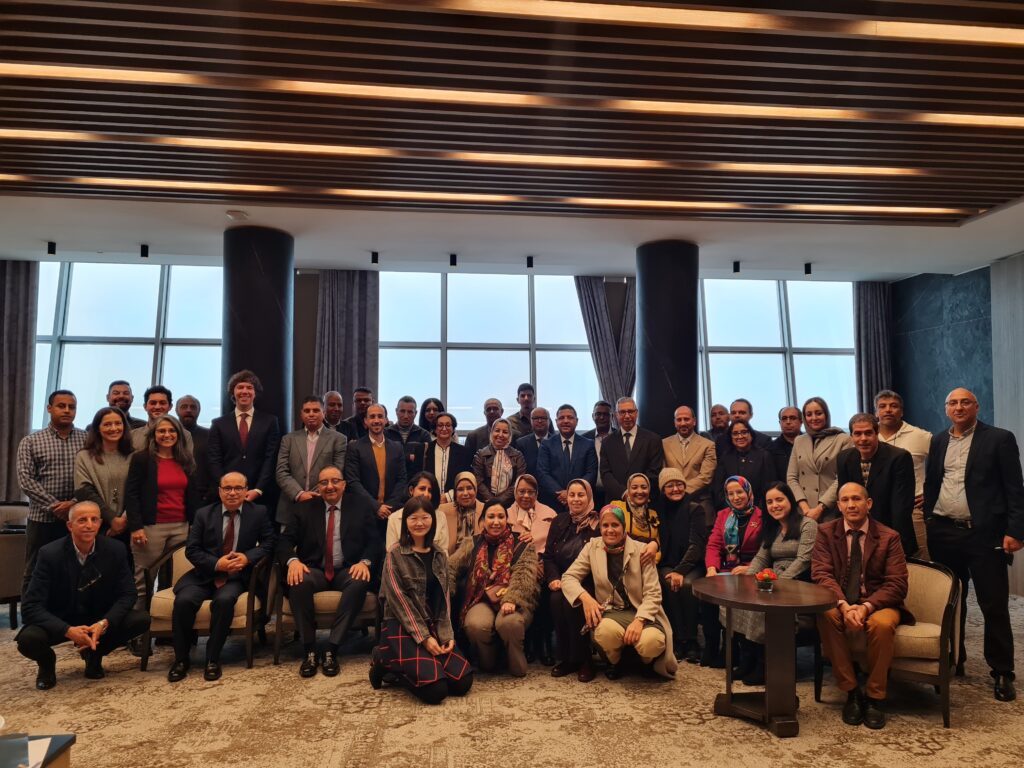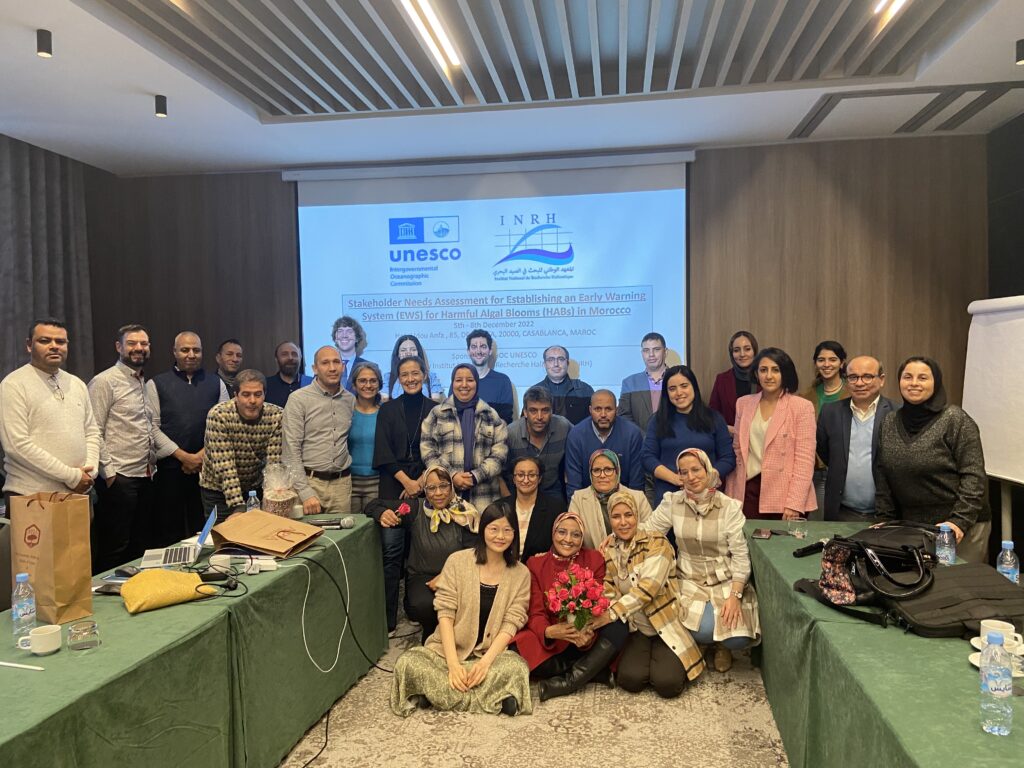UNESCO and the National Institute of Fisheries Research (INRH) of Morocco join forces to begin developing a national early warning system (EWS) for Harmful Algal Blooms (HAB) for the North African nation. The two entities co-organised a workshop on 5-8 December 2022 in Casablanca, gathering forty-five participants from government ministries, private sector, academic institutions and official laboratories.
“The INRH has developed an effective strategy for monitoring toxic phytoplankton blooms and the corresponding biotoxins to protect the consumer of fishery products. Knowing that the marine aquaculture sector is developing in Morocco, the establishment of an early warning system for HABs would make it possible to warn shellfish farmers of the possible development of toxic micro-algae and to guarantee the safety of the trade in aquaculture products, product safety and protection of consumers against the consumption of products hazardous to health,’’ said Samir Benbrahim, Head of the marine environment monitoring department at INRH.
Supported through funding from the Government of Norway (NORAD), the workshop included a two-day stakeholder consultation on specific needs and requirements for an Early Warning System for Morocco, followed by a two-day data training session on R programming and predictive modelling systems which could be implemented for operational use in Morocco for the prediction of the onset and duration of harmful algal bloom events.
The workshop built on ongoing efforts by the Moroccan authorities to implement and operate national monitoring programmes for HABs and marine biotoxins along the Moroccan coastline, aligned with the requirements as laid down in the Moroccan legislation and its partners (EU). Participants identified needs for progress in the areas of data standardization, to be used in predictive models and data analysis, continuing programming and modeling training.
“Morocco has rich datasets from harmful algal monitoring programs. With the collaborations built during this workshop, we’ve been able to move toward predictive modelling strategies for early warning systems.” Nick Record, invited expert from Bigelow Laboratory for Ocean Sciences.
The workshop lay the scientific groundwork for the future implementation of a tailor-made early warning system in the region.
“Warning alerts and messages should be regional and species specific with the warning or endpoint based on the stakeholder needs, to ensure warnings are targeted and are a tool for supporting the effectiveness of organizational processes and policies, for planning activities and for identifying and mitigating risks. To ensure that a system is aligned with agency´s needs, resources, and processes, it is necessary to define valid early warning indicators, collecting high-quality data, and identifying appropriate analytical techniques, before system development,” said Alexandra D. Silva, Vice-Chair of the IOC-FAO Intergovernmental Panel on Harmful Algal Blooms (IPHAB), and Chair of the IPHAB Task Team on the Early Detection, Warning and Forecasting or Harmful Algal Events.


Group photo of stakeholder consultation session participants Group photo of data training session participants
Towards an Early Warning System for Harmful Algal Blooms in Namibia
